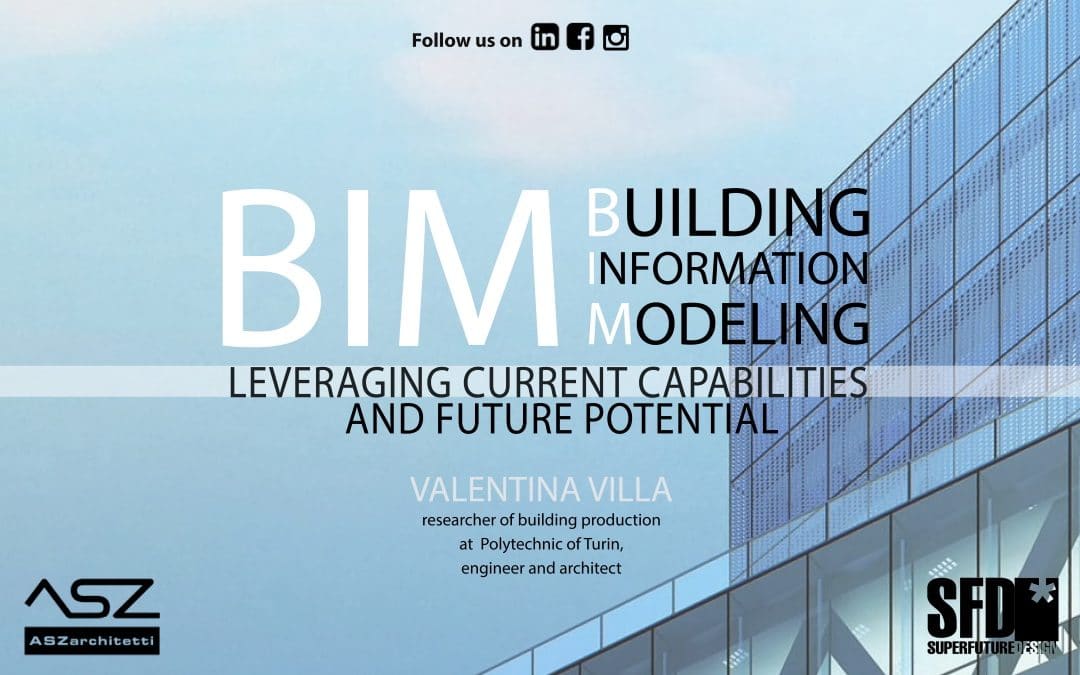BIM has been gaining immense traction in the design sphere recently, despite having been present since the last two decades. This methodology of managing building processes makes use of advanced digital tools. BIM creates a digital representation of a space’s functionalities and physicality. Hence, the model is a valuable resource of knowledge for a particular building. The information in the model is reliable, so it influences various decisions about the building process as well as the facility’s life-cycle.
The process associates a 3D model with alphanumerical data, but it’s much more than the conventional assumption of a 3D model; in fact, we’ve expanded into further domains, reaching 4D, 5D, and even 6D. Moreover, we’ve utilized its abilities to greater scales, such as in territorial urban planning.
The Understated Benefit of Implementing BIM
BIM acts as an informant for the project, providing the execution team with essential data. This provides new opportunities for automating specific tasks such as generating printed drawings, simulating the site’s life phases (4D), and even preparing metric calculations (5D).
Bringing a Much Needed Change to the Industry
Due to this open approach, BIM’s advanced abilities not only transformed the management process, but it’s revolutionizing the industry through change management. To be more specific, organizations can’t leverage BIM without working on their structural framework. They need to initiate new discussions with stakeholders in the supply Chain, re-engineer maintenance and management systems, and work on solid benchmarks for demanding clients.
What Defines BIM?
It’s growing more apparent that BIM is not just characterized by a 3D parametric building model but the crucial data it provides. At this point in time, this methodology is bringing major changes to the construction sector, which consequently influences an entire domain of property managers, client organizations, and design firms.
A First-Hand Experience of BIM
My first time experimenting with BIM was when I was still conducting scientific trials carrying out such work at the Polytechnic of Milan. While I was studying construction sector trends being practiced in the US at the time, Italy’s creative communities had started looking into the BIM. First, it was considered only as a 3-dimensional building model, but I focused on how it addressed management challenges in new projects. When it comes to adoption and utilization, customers do their part since it’s impossible to assess the life cycle of a structure without using it extensively. The life cycle would help us measure factors like ROI and utility.
Not to mention, real estate asset managers need to establish an efficient and needs-based information management framework for the organization’s own projects. Since 2016 I have been working at Polytechnic of Turin on defining the Employer’s Information Requirements, which is important for setting up a plan to execute a BIM approach. Extensive research in this field has led to a detailed LOD that aligns with the requirements for access to information sets pertaining to the project’s objects, under Italian law. Nonetheless, our vision for utilizing data to make complex project decisions extends farther than just BIM: the methodology, although important, only makes up a fraction of the digitization process. Data values and data sets are the core focus of the main discussion.
Future Prospects for BIM
In today’s day and age, so many factors dictate the outcome of future projects, for instance, the enhancement of new technologies and realities like PropTech and ConTech, as well as concepts like the Circular Economy and Digital Twin. Then, there’s also a greater emphasis on sustainability and going green. With all these ideologies taking root in the industry, firms can use these as a starting point in BIM and with the help of Big Data, expand on their goals. With resilience and perseverance, they are sure to transform the experiences of using spaces, whether commercial, recreational or residential.

